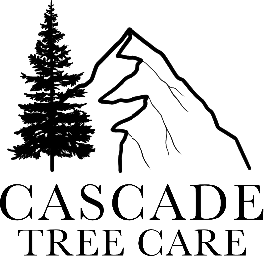The Impact of Tree Pruning on Flowering and Fruit Production
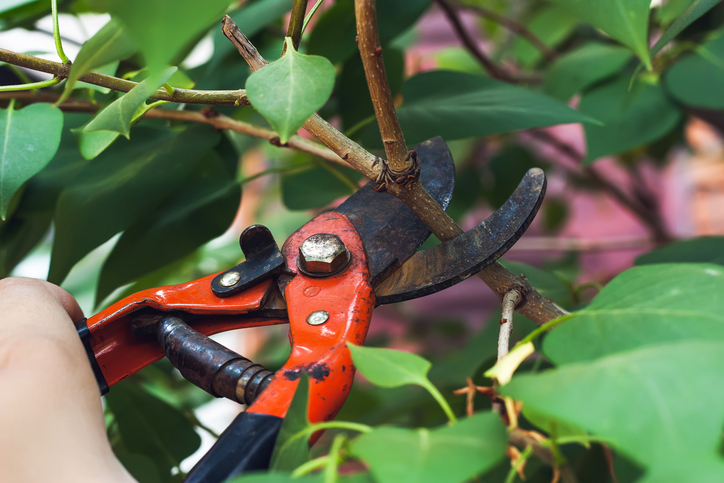
Tree maintenance is a vital practice that promotes healthy growth and enhances flowering and fruit production. By carefully removing certain branches and foliage, gardeners can encourage trees to direct their energy towards producing vibrant blooms and abundant fruit. This article explores the various ways tree pruning in Bellevue, WA, influences flowering and fruit yield, helping you achieve a thriving garden. 1. Promoting Air Circulation Pruning improves air circulation within the tree’s canopy, reducing humidity and the risk of disease. When air can flow freely, it helps prevent fungal infections that can harm blooms and fruit. Healthy air circulation supports overall plant health, leading to better flowering and fruit production. 2. Enhancing Sunlight Exposure Proper pruning allows for better sunlight exposure, which is essential for photosynthesis. When branches are thinned, sunlight reaches more areas of the tree, promoting even growth. Increased sunlight encourages flowers to bloom and fruits to ripen more effectively. 3. Removing Dead or Diseased Wood Tree trimming involves removing dead, damaged, or diseased branches that can detract from the tree’s energy. By eliminating these areas, the tree can allocate more resources to healthy growth and fruit production. This practice not only improves the overall health of the tree but also enhances its ability to produce flowers and fruit. 4. Shaping the Tree for Better Production Pruning allows gardeners to shape the tree to encourage productive growth patterns. By strategically cutting branches, you can promote an open structure that supports larger fruit and more blossoms. A well-shaped tree maximizes the potential for fruit production by ensuring all parts receive the necessary nutrients. The profits subtle the tree-cutting cost in Bellevue, WA. Tree trimming significantly impacts flowering and fruit production, making it an essential practice for any gardener. By promoting air circulation, enhancing sunlight exposure, and strategically removing unwanted growth, you can boost your trees’ yield. Regular pruning not only improves tree health but also maximizes your garden’s beauty and productivity. Boost your garden’s yield with expert tree care! Contact our professional at Cascade Tree Services for top-notch tree trimming service in Bellevue, WA. Call us at 425-530-9697 to schedule your appointment today!
Preventing Storm Damage: The Essential Role of Tree Trimming
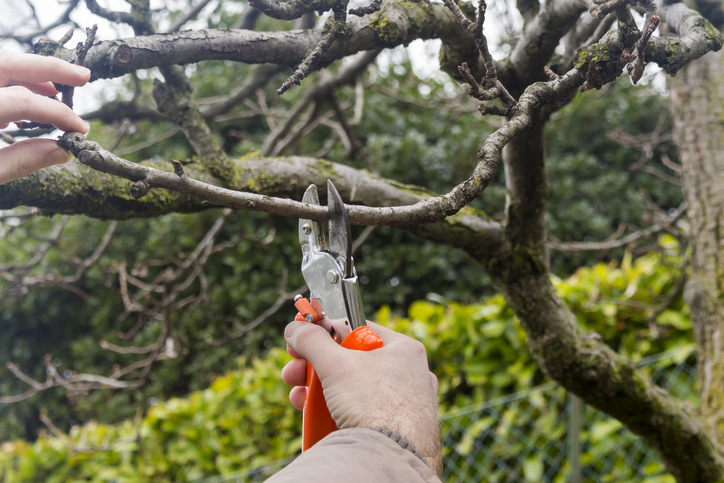
Tree pruning is a crucial practice for maintaining the health and safety of trees in your landscape. Properly trimmed trees are less susceptible to storm damage, reducing risks to your property and enhancing the overall beauty of your outdoor space. This article explores how regular tree trimming in Bellevue, WA, can help prevent storm damage and assure the longevity of your trees. 1. Strengthening Tree Structure Regular trimming removes weak or damaged branches that can easily break during storms. By pruning these vulnerable areas, you promote a stronger tree structure that can better withstand high winds and heavy rain. A well-structured tree has a lower risk of falling or losing branches during severe weather. 2. Reducing Wind Resistance Tree maintenance helps reduce the canopy’s overall size and weight, allowing wind to pass through more easily. Trees with dense canopies can catch more wind, increasing the likelihood of damage, and overcoming the tree removal cost in Bellevue, WA. By thinning the canopy, you minimize wind resistance and decrease the risk of uprooting or breaking. 3. Improving Airflow and Sunlight Penetration Trimming enhances airflow and sunlight penetration, which contributes to healthier trees. Improved airflow reduces humidity around the tree, lowering the chances of disease and decay. Additionally, better sunlight access allows for more vigorous growth and resilience against environmental stressors. 4. Preventing Overgrowth Overgrown trees are more likely to sustain damage from strong winds or falling debris. Regular trimming prevents overgrowth, keeping branches clear of power lines and structures. By maintaining an appropriate size, you can significantly reduce the risk of damage during storms. Tree cutting is an essential practice for preventing storm damage and maintaining tree health. Regular trimming can strengthen tree structure, reduce wind resistance, and enhance safety, protecting your property from severe weather impacts. Make tree cutting a priority to safeguard your landscape. Protect your home from storm damage with professional tree care! Contact Cascade Tree Services for expert tree pruning services in Bellevue, WA. Call us at 425-530-9697 today to guarantee your trees are safe and healthy!
Best Tree Removal Strategies to Preserve Your Landscape Design
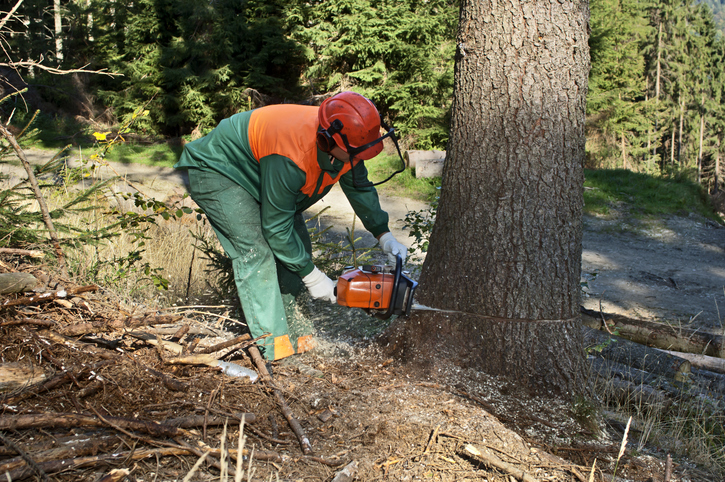
Tree removal can significantly impact your landscape design, affecting both aesthetics and functionality. While it’s sometimes necessary to remove trees for safety or health reasons, careful planning can help you maintain the beauty of your outdoor space. This article explores the strategies followed for the best tree removal in Bellevue, WA, that safeguard your landscape while promoting healthy growth. 1. Assess the Need for Removal Before removing any tree, assess its health and position. Look for signs of disease, pest infestations, or structural damage. Additionally, consider whether the tree disrupts the overall design or is in the way of planned enhancements. 2. Consult with a Professional Hiring a certified arborist can provide valuable insights into tree health and removal options. Professionals can recommend whether to prune, relocate, or remove a tree based on its condition and role in your landscape, especially for tree cutting in Bellevue, WA. Their expertise guarantees that you make informed decisions while minimizing damage to surrounding plants. 3. Choose the Right Time for Removal Timing is crucial when it comes to tree removal. Late winter or early spring is often ideal, as trees remain dormant, reducing the risk of shock to nearby plants. Additionally, removing trees during this time allows for quicker landscape recovery. 4. Plan for Replacement If you must remove a tree, consider planting a replacement in its place. Select a species that complements your existing landscape and offers similar benefits, such as shade or aesthetic appeal. Planning for replacement not only preserves the design but also supports the ecosystem. Effectively removing trees while preserving your landscape design requires careful planning and execution. By assessing the need for removal, consulting professionals, and planning for replacement, you can maintain the beauty and functionality of your outdoor space. Transform your landscape today! Contact Cascade Tree Services for expert advice on tree removal strategies and care. Call us at 425-530-9697 for competitive rates on tree trimming costs in Bellevue, WA.
The Benefits of Regular Tree Trimming for Landscape Health
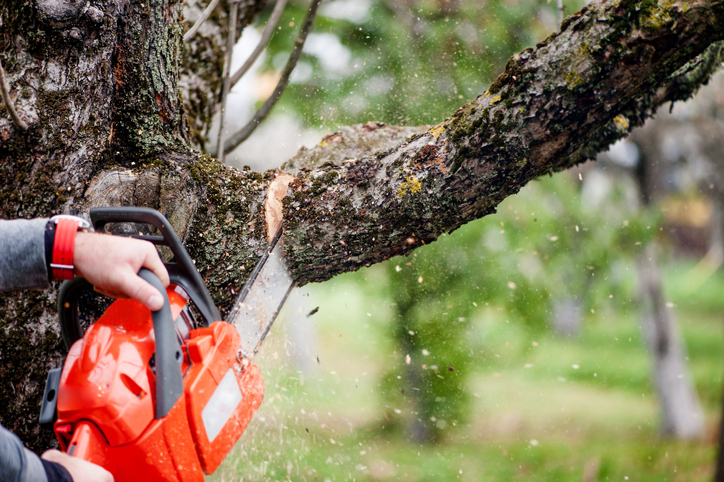
Trees are an integral part of any landscape, providing great looks, shade, and environmental benefits. However, just like any living organism, trees require proper care and maintenance to thrive. Regular tree care is one of the most effective ways to confirm that your trees remain healthy and contribute positively to your landscape. This article explores the numerous benefits of regular tree trimming, from enhancing the overall aesthetics of your property to improving tree health and safety. 1. Promotes Healthy Growth Regular tree maintenance plays a crucial role in promoting healthy growth. By removing diseased or dead branches, you allow the tree to focus on new growth. This process encourages a more robust and fuller canopy, improving the tree’s overall vitality. Pruning during the appropriate season can stimulate the growth of new shoots and blossoms. As a result, you may notice an increase in foliage, flowers, and even fruit production in flowering or fruit-bearing trees. Regular trimming not only enhances the aesthetic appeal of your landscape but also guarantees that your trees can reach their full potential. 2. Prevents Disease and Infestations Trees can fall victim to a variety of diseases and pests, which can spread quickly if not addressed. Regular tree upkeep helps in identifying and removing infected branches before the issue spreads to the entire tree or surrounding plants. Moreover, by maintaining proper spacing between branches, you promote better air circulation and sunlight penetration, reducing the humidity levels that often attract pests and diseases. A healthy tree is better equipped to resist infestations and recover from any potential issues. In essence, proactive tree upkeep acts as a preventive measure, safeguarding your landscape from the threats of pests and diseases. 3. Enhances Safety One of the most significant benefits of regular tree care is the enhancement of safety on your property. Overgrown trees can pose various risks, such as falling branches during storms or high winds. These branches can cause damage to property and vehicles or even injure people. Regular trimming confirms that any weak or overextended branches are removed before they become a hazard. Additionally, maintaining tree height and distance from power lines can help avoid potential electrical hazards. By prioritizing tree health and safety, you create a secure environment for your family and visitors. 4. Improves Aesthetics and Property Value The visual appeal of your landscape significantly impacts your property value. Well-maintained trees can enhance the overall aesthetics of your home, making it more inviting and attractive. Regular tree shaping guarantees they remain visually pleasing and symmetrical. When potential buyers evaluate a property, the landscape plays a critical role in their impression. A beautiful, well-kept yard with healthy trees can increase curb appeal and property value. Investing in regular tree care can yield substantial returns when it comes time to sell your home. 5. Encourages Environmental Benefits Healthy trees provide numerous environmental benefits, such as improved air quality, reduced carbon footprint, and enhanced biodiversity. By ensuring that your trees remain healthy through regular trimming, you contribute to a more sustainable environment. Trimming helps trees thrive, which in turn supports wildlife habitats and encourages biodiversity in your yard. Birds, insects, and other animals depend on healthy trees for food and shelter. By maintaining your trees, you are also promoting a healthier ecosystem in your local community. 6. Provides Better Sunlight Exposure Adequate sunlight exposure is essential for the growth of many plants and flowers in your landscape. Overgrown trees can block sunlight from reaching your garden or other plants, leading to stunted growth and poor flowering. Regular tree shaping opens up space and allows more sunlight to penetrate the landscape. This improved light exposure can enhance the growth of understory plants and flowers, resulting in a more vibrant and diverse garden. Trimming your trees not only benefits the trees themselves but also supports the overall health of your landscape. 7. Saves Money in the Long Run While some homeowners may view tree maintenance as an unnecessary expense, the truth is that regular maintenance can save money in the long run. Healthy trees are less likely to develop severe issues that require costly interventions, such as disease treatment or removal. By investing in routine tree upkeek, you minimize the risks associated with overgrown or unhealthy trees. This proactive approach can prevent property damage and reduce the likelihood of expensive emergency tree removal services. Additionally, maintaining your trees can lead to increased property value, further enhancing your investment. Regular tree trimming is essential for maintaining the health and beauty of your landscape. The benefits are numerous, from promoting healthy growth and preventing disease to enhancing safety and improving aesthetics. By prioritizing tree care, you not only support the longevity of your trees but also contribute to a healthier environment and a more inviting outdoor space. For professional tree trimming services that enhance your landscape’s health, contact our experts at Cascade Tree Services today! Our experienced team is here to help you maintain your trees’ beauty and safety. Call us at 425-530-9697 to enhance your trees’ health and beauty!
Tree Trimming Tips to Enhance Your Home’s Curb Appeal
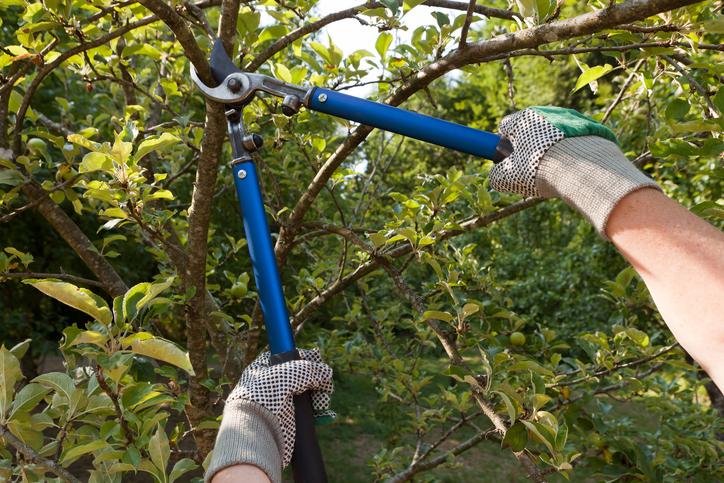
Trimming trees is more than just a routine maintenance task—it’s a vital component of landscaping that can dramatically enhance your home’s curb appeal. Properly trimmed trees not only improve the aesthetics of your property but also contribute to the overall health of your landscape. In this guide, we’ll explore ten essential tree-trimming tips to help you achieve a well-manicured, visually appealing exterior that stands out in your neighborhood. 1. Assess the Health of Your Trees Before trimming, evaluate the health of your trees. Look for signs of disease, pests, or structural issues. Healthy trees will respond better to pruning and will benefit more from the aesthetic improvements. If needed, address any health concerns with professional help before proceeding with trimming. 2. Understand the Right Time to Trim Timing is crucial for effective trimming. Generally, late winter or early spring is ideal, as trees are dormant and less likely to experience stress from pruning. However, the timing may vary depending on the species and local climate conditions. Consult a local arborist for species-specific recommendations. 3. Choose the Right Tools Using the correct tools is essential for clean cuts and the health of your trees. Invest in high-quality pruning shears, loppers, and saws. For larger branches, a pole saw or chainsaw may be necessary. Ensure all tools are sharp and well-maintained to prevent damage to the tree. 4. Prune for Shape and Structure Pruning helps maintain a tree’s shape and structure, enhancing its visual appeal. To improve the tree’s form, remove dead, diseased, or crossing branches. Focus on creating a balanced canopy and ensuring that the tree’s natural shape is preserved. Avoid excessive pruning, which can lead to stress and potential health issues. 5. Consider the Tree’s Growth Patterns Different trees have different growth patterns. Research or consult an arborist to understand how your specific tree species grows and how it should be pruned. For example, some trees have a central leader that should be maintained, while others may require thinning to improve light penetration and air circulation. 6. Avoid Topping Trees Topping, or cutting back the main branches of a tree to stubs, is harmful and should be avoided. It can lead to weak growth, increased susceptibility to pests and diseases, and an unattractive appearance. Instead, focus on proper pruning techniques to shape the tree while preserving its health and structure. 7. Maintain Clearance Around Structures Ensure that tree branches are trimmed to maintain adequate clearance around structures such as roofs, gutters, and power lines. This prevents damage to your home and reduces the risk of fire hazards. Proper clearance also improves the appearance of your property by preventing branches from obstructing views or creating a cluttered look. 8. Enhance Curb Appeal with Strategic Trimming Strategic trimming can enhance your property’s overall curb appeal. Shape trees to complement your home’s architectural style and create a cohesive look with your landscaping. For example, formal hedges can frame the entrance, while ornamental trees can add focal points to your garden. 9. Dispose of Trimmings Properly Proper disposal of trimmings is important for maintaining a tidy appearance and preventing potential hazards. Consider composting small branches and leaves or utilizing a green waste disposal service. For larger branches, contact a local tree removal service to handle disposal or recycling. 10. Seek Professional Help When Needed For large or complex trimming tasks, it’s best to hire a professional arborist. They have the expertise and equipment to handle difficult cuts safely and effectively. Professionals can also provide valuable advice on tree care and maintenance to keep your landscape looking its best. Tree trimming is a key element in enhancing your home’s curb appeal and maintaining a healthy, attractive landscape. By following these tips, you can ensure that your trees contribute positively to your property’s overall appearance and value. Regular maintenance and strategic pruning not only improve aesthetics but also support the health and longevity of your trees. Are you ready to boost your home’s curb appeal? Contact a local arborist from our team at Cascade Tree Services at 425-530-9697 today for a professional tree trimming consultation and see the difference it can make for your property.
Top 5 Factors to Consider When Choosing the Best Tree Removal Service
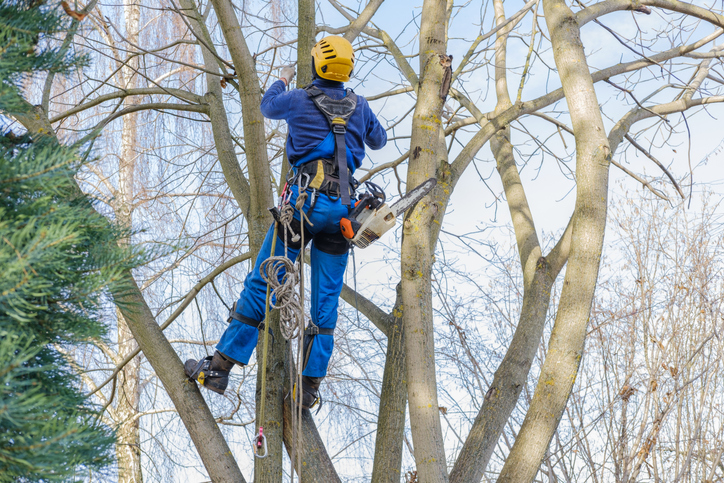
Choosing the right tree removal service is crucial for ensuring the safety and health of your property. With numerous options available, it’s essential to evaluate several key factors before making your decision. From assessing their experience to understanding their pricing, this guide will help you select a professional for the best tree removal in Bellevue WA. 1. Experience and Expertise When selecting a service, consider its experience and expertise. A company with years of experience is more likely to handle complex tree removal tasks safely and efficiently. Verify its qualifications and ensure it has trained professionals on staff. 2. Licensing and Insurance Ensure that the service is properly licensed and insured. A valid license demonstrates that the company adheres to local regulations, while insurance protects you from potential liabilities. Request proof of these credentials before hiring. 3. Cost and Pricing Structure Compare the cost and pricing structure of different services. Obtain detailed quotes that include all potential charges to avoid an unexpected tree-cutting cost in Bellevue WA. Consider getting multiple estimates to find a balance between quality and affordability. 4. Customer Reviews and Reputation Check customer reviews and the company’s reputation in the community. Online reviews and testimonials can provide insights into the quality of service and customer satisfaction. A company with positive feedback is more likely to deliver reliable results. 5. Equipment and Safety Measures Assess the equipment and safety measures used by the service. Modern, well-maintained equipment ensures efficient and safe tree removal. Make sure the company follows safety protocols to protect both their workers and your property. Selecting the best service requires careful consideration of various factors, including experience, licensing, insurance, cost, and reputation. By evaluating these aspects, you can make an informed decision and ensure that your tree removal needs are handled professionally and safely. Do you need an expert for tree trimming near Bellevue WA? Contact us at Cascade Tree Services at 425-530-9697 for a free estimate and consultation. Let our experts help you with all your tree-related needs!
Common Tree Trimming Mistakes and How to Avoid Them
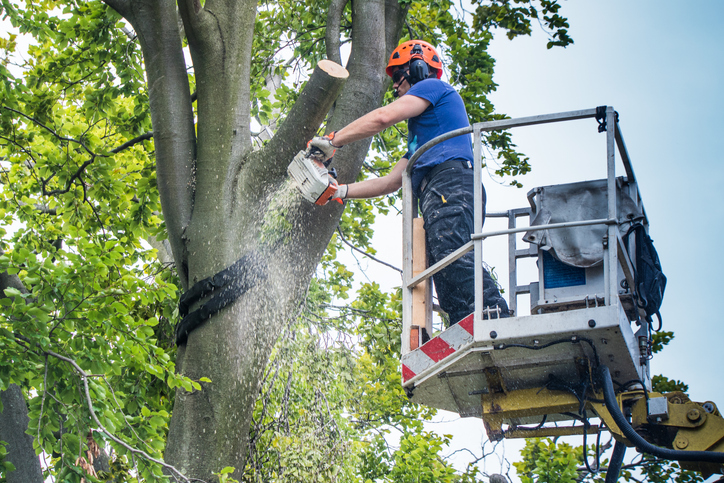
Proper trimming is essential for maintaining the aesthetics and health of your trees. However, many homeowners make mistakes that can harm their trees or hinder their growth. Understanding these common errors during tree trimming in Bellevue WA, and how to avoid them will guarantee your trees are vibrant and well-maintained. 1. Over-Pruning Over-pruning can stress your trees, leading to weak growth and increased vulnerability to pests and diseases. Avoid removing more than 25% of a tree’s canopy in a single year. Prune only dead, diseased, or damaged branches to maintain a healthy structure. 2. Incorrect Timing Pruning at the wrong time can interfere with a tree’s natural growth cycle. For most species, late winter or early spring is the best time to trim before new growth starts. Bypass pruning in the heat of summer or during the fall, as this can lead to excessive stress. 3. Using Dull or Improper Tools Using dull or inappropriate tools can result in ragged cuts that are slow to heal. Always use sharp, clean pruning shears or saws designed for the size of the branch. This ensures clean cuts that minimize damage and promote faster healing. 4. Making Topping Cuts Topping, or cutting back large branches to stubs, is harmful and can lead to weak regrowth. Instead, use selective pruning to remove individual branches, promoting a natural, balanced growth. Topping can lead to the growth of weak, poorly attached branches that are prone to breakage. 5. Ignoring Tree Species Needs Different tree species have unique pruning requirements and growth habits. Research the specific needs of your tree species before trimming. Tailor your pruning techniques to match the tree’s growth pattern and health requirements. Avoiding these common mistakes during tree cutting in Bellevue WA, will help keep your trees healthy and beautiful. Proper pruning techniques and timing are crucial for maintaining your trees’ vitality. For professional advice or assistance with tree care, contact a certified arborist today. If you need tree removal contractors in Bellevue WA, reach out to our team of certified arborists at Cascade Tree Services. Call us at 425-530-9697 to schedule a consultation.
Top 5 Signs That It’s Time for Tree Removal
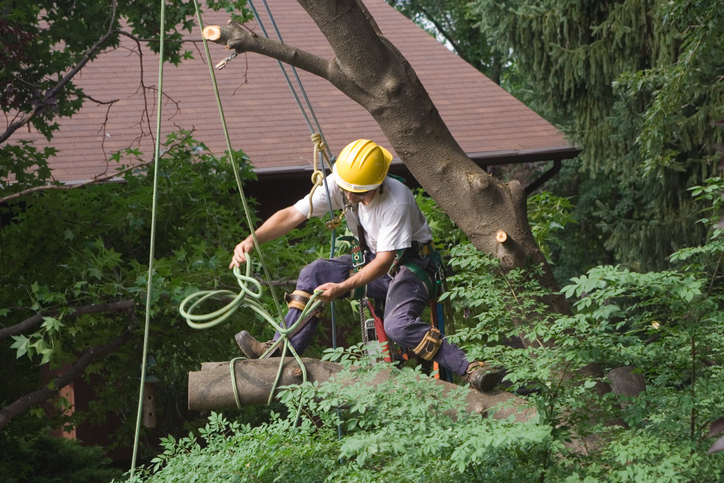
Trees can greatly enhance the beauty and value of your property, but they also require regular care and attention. While many trees thrive with minimal intervention, certain signs indicate that a tree may be beyond saving or pose a risk to your home. Identifying these signs early is crucial to prevent potential hazards and costly damage. In this blog post, we’ll explore the top 5 signs that it might be time to consider tree removal in Bellevue WA, to keep your property safe and well-maintained. 1. Dead or Dying Branches One of the most obvious signs that a tree might need removal is the presence of dead or dying branches. These branches can pose a significant risk if they fall, potentially causing injury or property damage. Regularly inspect your tree for any branches that are brown, brittle, or missing leaves, as these can indicate poor health. 2. Severe Leaning A tree that has begun to lean significantly could be a sign of structural instability. This could be due to poor root health, soil erosion, or damage. A severely leaning tree is at a high risk of toppling over, making it essential to assess the situation and consult a professional if needed. 3. Fungus or Decay Fungal growth around the base or on the trunk of a tree is often a sign of internal decay. This can compromise the tree’s stability and overall health. If you notice mushrooms or unusual growths at the base, it’s crucial to have the tree evaluated by an expert. 4. Cracks or Splits Cracks and splits in the trunk or branches can indicate severe structural problems. These issues can weaken the tree and make it more susceptible to falling or losing limbs. Regularly inspect your tree for any signs of cracking and seek professional advice if you find any. 5. Pest Infestation Pests can cause significant damage to trees, often leading to their decline. If you notice signs of pest infestation, including holes in the bark or unusual insects around the tree, it may be an indication that the tree is beyond recovery. Addressing pest issues early can sometimes save the tree, but in severe cases, removal may be necessary. Recognizing the signs that indicate it’s time to hire tree pruning services in Bellevue WA, is essential for maintaining the safety and health of your property. By monitoring your trees for dead branches, leaning, fungal growth, cracks, and pest infestations, you can take proactive steps to address any issues before they become major problems. If you notice any of these signs, it’s best to consult with a professional to determine the best course of action. Are you looking for a tree trimming service near me? Contact our certified arborists at Cascade Tree Services at 425-530-9697 for more information.
Tree Pruning Services and Their Role in Enhancing Property Value
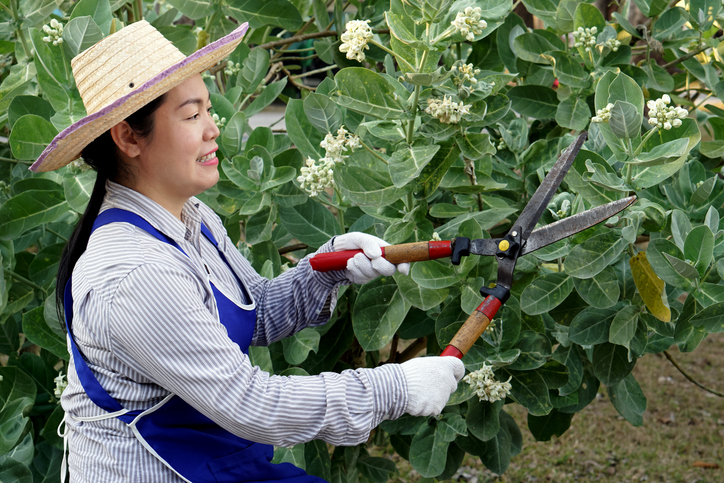
Tree pruning is an essential aspect of landscape maintenance that goes beyond simple aesthetics. Properly maintained trees not only contribute to the beauty of your property but also play a critical role in increasing its market value. Homeowners and real estate professionals alike recognize the importance of well-cared-for trees in creating an attractive and valuable property. This article explores how tree pruning services can enhance your property value by improving curb appeal, promoting tree health, and preventing potential hazards. 1. Enhancing Curb Appeal Curb appeal is one of the most important factors in determining property value. First impressions are crucial, and the appearance of your landscape plays a significant role in that. Well-pruned trees contribute to a polished and well-maintained look that can attract potential buyers. Trees that are neatly trimmed, with no overgrown branches or unsightly growths, create a positive visual impact. Tree maintenance services ensure that your trees are shaped and maintained in a way that complements your property’s overall aesthetic, enhancing its appeal and value. 2. Promoting Tree Health Healthy trees are valuable assets to any property. Regular pruning removes dead, diseased, or damaged branches, which helps prevent the spread of decay and disease to other parts of the tree. By promoting healthy growth, tree shaping services can extend the lifespan of your trees and maintain their structural integrity. Healthy trees are not only more attractive but also provide shade, reduce energy costs, and contribute to a sustainable environment, all of which add to your property’s value. 3. Preventing Property Damage Overgrown or improperly maintained trees can pose significant risks to your property. Branches that hang too close to the house, power lines, or other structures can cause damage during storms or high winds. Fallen branches can lead to costly repairs and decrease your property’s value. Professional tree grooming services help mitigate these risks by carefully removing or trimming branches that pose a threat. This proactive approach not only protects your property but also ensures that your trees remain healthy and stable, further enhancing their value. 4. Increasing Sunlight and Air Circulation Properly pruned trees allow for better sunlight penetration and air circulation throughout your landscape. This is particularly important for gardens, lawns, and other plantings that rely on adequate sunlight and airflow to thrive. Improved sunlight exposure can also brighten up your property, making it more inviting and visually appealing. Tree trimming services strategically remove branches that block sunlight, ensuring that your landscape remains vibrant and healthy. This enhancement in the overall appearance of your property can significantly boost its market value. 5. Highlighting Architectural Features Trees are a crucial element in a property’s overall design, and their placement and maintenance can either complement or detract from its architectural features. Professional tree maintenance services can help highlight and accentuate your property’s best features by carefully shaping trees to frame views, create focal points, and enhance the visual flow of your landscape. This thoughtful approach to tree maintenance adds to the charm and appeal of your property, making it more attractive to potential buyers. 6. Boosting Energy Efficiency Strategically pruned trees can contribute to energy efficiency by providing shade in the summer and allowing sunlight to warm your home in the winter. Properly placed and maintained trees can reduce your energy bills, making your home more cost-effective and environmentally friendly. Tree care services guarantee to prune trees in a way that maximizes these benefits, which can be a significant selling point for energy-conscious buyers and add value to your property. 7. Creating a Safe Outdoor Environment Safety is a top priority for any homeowner, and trees that are not properly maintained can pose serious risks. Overgrown branches, deadwood, and other hazards can create unsafe conditions for your family and visitors. Regular tree pruning helps eliminate these risks, creating a safer outdoor environment. A well-maintained landscape that prioritizes safety is more appealing to buyers and can increase the value of your property. 8. Long-Term Investment in Your Property Tree pruning is not just a one-time service; it’s an ongoing investment in the long-term health and beauty of your landscape. By regularly investing in professional tree grooming services, you are ensuring that your trees remain healthy, safe, and attractive for years to come. This continuous care contributes to the overall value of your property, making it a wise investment for homeowners who want to protect and enhance their property’s worth. Tree care services play a crucial role in maintaining and enhancing the value of your property. From improving curb appeal and promoting tree health to preventing property damage and boosting energy efficiency, the benefits of regular tree maintenance are undeniable. By investing in professional tree pruning services, you can ensure that your landscape remains beautiful, safe, and valuable for years to come. Enhance the value of your property with expert tree pruning services. Contact our proficients at Cascade Tree Services at 425-530-9697 to schedule an appointment today and see how we can help maintain your landscape’s beauty and health.
The Environmental Benefits of Professional Tree Pruning Services
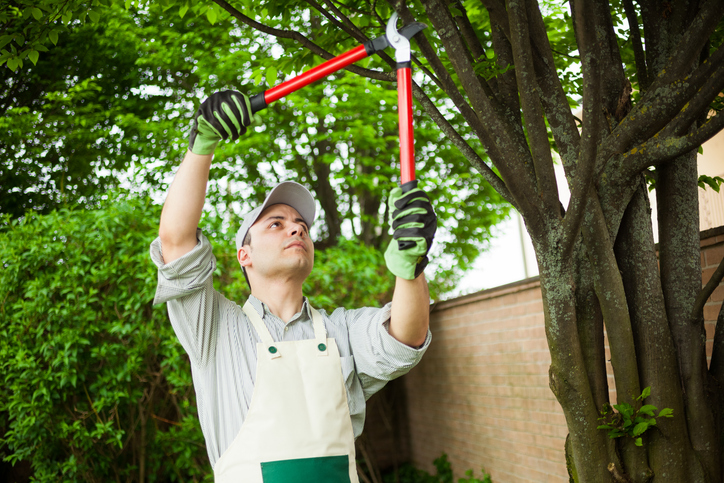
Professional tree care services play a crucial role in maintaining the health and sustainability of our environment. Pruning enhances the appearance of trees and contributes to the overall health of the ecosystem by removing lifeless or overgrown branches. Here are the key environmental benefits of regular tree pruning in Bellevue, WA. 1. Promotes Healthy Growth Regular pruning encourages tree health by removing dead, diseased, or damaged branches. This allows the tree to focus its energy on new growth, ensuring a robust and healthy canopy. A healthy tree contributes to cleaner air and better environmental conditions. 2. Reduces the Spread of Disease Professional pruning helps prevent the spread of disease within a tree and to neighboring trees. By removing infected branches, arborists can stop the disease from spreading, thus protecting the entire landscape. This proactive approach reduces the need for chemical treatments, benefiting the environment. 3. Improves Air Quality Healthy trees are more effective at absorbing carbon dioxide and releasing oxygen, which improves air quality. Pruning helps trees thrive and maximizes their ability to filter pollutants from the air, contributing to a healthier environment. 4. Enhances Wildlife Habitats Proper pruning maintains trees’ structural integrity, providing safe habitats for birds and other wildlife. By keeping trees healthy and strong, professional pruning services support local ecosystems and biodiversity. 5. Prevents Environmental Hazards Overgrown branches can pose risks during storms or high winds, leading to potential damage to property or the environment. Pruning reduces these hazards by maintaining the tree’s shape and strength, ensuring it remains a safe and beneficial part of the environment. Professional tree trimming near Bellevue, WA, offers significant environmental benefits by promoting healthy growth, reducing disease, and supporting local ecosystems. Regular maintenance not only ensures the longevity of your trees but also contributes to a healthier, more sustainable environment. Are you looking for a dependable tree cutting service near me? Contact our professionals at Cascade Tree Services, your trusted partners, at 425-530-9697 for professional care today!
